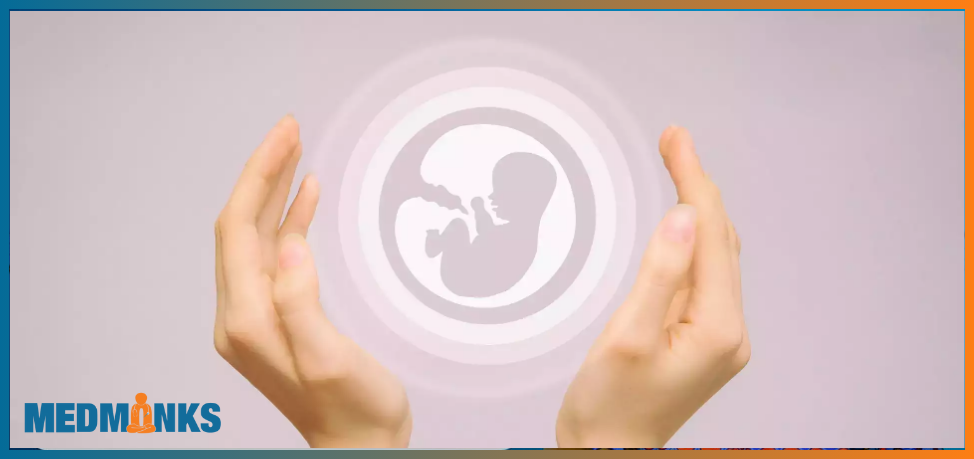A Treatment Guide For Finding Suitable Fertility Options

The following article has been drafted to give infertile couples a quick glimpse at different fertility treatment options that can increase their chances of conceiving. For gaining detailed information on particular treatments, readers can explore Medmonks blogs.
1. Fertility drugs
Clomiphene and gonadotropins are the two most common drugs used for boosting fertility. Their composition helps in regulating patients reproductive hormones, that result in triggering the release of eggs during each ovulation cycle. Most women consume these fertility drugs for four to six months before conceiving or switching to different fertility treatment.
Side effects and drawbacks of Fertility Drugs
These fertility drugs are known for increasing patients odds of conceiving twins or more.
Clomiphene can cause mood swings, hot flashes, pelvic pain, ovarian cysts, breast tenderness, nausea, thick/ dry cervical mucus, mild depression, headaches, and visual symptoms.
Gonadotropins can cause swelling or rash at the injection site, breast tenderness, mood swings, headaches, and abdominal bloating. Around 20% of women who took gonadotropins were diagnosed with the development of a mild form of Ovarian Hyperstimulation Syndrome (OHSS) in their body, which causes the ovaries to grow in size and also result in fluid build-up in the patient’s abdomen.
Success rates
About 80% of women who consume clomiphene regularly ovulate within the first three months. Of them, 30-40% are able to conceive by their third treatment cycle.
Gonadotropins can help in achieving pregnancy rate up to 15% per cycle with timed intercourse.
Cost of Fertility Drugs in India Vs the USA
Clomiphene pills can cost between $10 to $100 a month, depending on the prescribed dosage and patient’s choice of brand or use of generic medicines. Additional costs might include doctor visits, routine tests including ultrasounds of the ovaries, and additional fertility procedures like IUI (intrauterine insemination).
Gonadotropin injections can cost around $1,000 to $5,000 per month in countries like the USA, which again depend on the brand, dosage and the number of shots prescribed to the patients. Additional costs might include blood tests, doctor visits, and ultrasounds.
The cost of fertility drugs in India is way more affordable, because of the availability of generic medicines in the country that range start from USD 50 for medications and USD 200 for injections.
2. Surgical Infertility Treatments
Surgery can help in correcting genetic defects, remove fibroids, open blocked fallopian tubes, remove endometriosis tissues, and treat PCOS (polycystic ovarian syndrome).
Two surgical procedures which are commonly used for treating gynecological problems are laparotomy and laparoscopy. Laparoscopy uses a thin flexible instrument that comes with a lighted camera attached to it which is inserted inside the patient through small incisions for fixing the above-mentioned problems. Laparotomy performs the same task by just using a larger abdominal incision. It is commonly performed in preparation of a major procedure.
Side effects and drawbacks
Patients can feel discomfort in their back or shoulders after surgery. It stems from the use of carbon dioxide gas during surgery for inflating patients abdomen so that the organs can be easily viewed.
If patients are given general anesthesia, they can have a sore throat because of the breathing tube which is used in the surgery.
The incisions can take a few weeks to heal, and can also leave permanent marks.
Success rates of Surgical Fertility Treatments
The success rate of the surgery depends on the case of the patient and the technique used for treating it.
Women with minimal to mild endometriosis have 40% more likelihood of getting pregnant by the eighth/ ninth month after going under a laparoscopic treatment.
Approximately 21% to 59% of women whose fallopian tubes are corrected end up conceiving after the surgery.
50% of women with PCOS who go under ovarian drilling surgery get pregnant within a year.
Cost
The cost of surgery for treating infertility condition can range between USD 1,000 to USD 3,500 in India, depending on the patient’s case, type of surgery, the technology used etc., whether it is performed in an outpatient or inpatient setting.
3. Intrauterine insemination (IUI)
IUI is one of the most common infertility treatment used worldwide. IUI is performed by depositing sperm manually of the patient’s partner or a donor directly into the patient’s uterus, using a catheter tube that is inserted through the cervix.
Side effects and drawbacks
Patients can experience cramping for a few days after the treatment.
Many women who undergo "stimulated" IUI cycles are prescribed fertility drugs before the procedure. These drugs can:
- Raise the patient’s risk of conceiving twins or more.
- Raise patient’s risk of developing ovarian hyperstimulation syndrome (OHSS).
- Cause side effects like mood swings and breast tenderness.
Success rates
The pregnancy rate is stimulated by 7 to 16 percent after every IUI cycle for couples who are suffering from unexplained infertility.
Cost
The Averages cost of an IUI cycle starts at USD 865 per cycle in India.
4. In vitro fertilization (IVF)
During In-vitro fertilization (IVF) procedures, the eggs are surgically removed from the patient's ovaries and then introduced to the sperm in a laboratory which is extracted from their partner or a donor. If the fertilization is successful, the resulting embryo is transferred to the patient's uterus through a thin tube.
Side effects and drawbacks
Patients have a high likelihood of having twins or more, if more than one embryo is transferred in their uterus.
Most patients are recommended to consume gonadotropins before IVF their treatment. Gonadotropins have a few side effects (rash or swelling, mood swings, sore breasts, headaches, and bloating) and can also increase the risk of getting OHSS (ovarian hyperstimulation syndrome).
Spotting and cramping can also be experienced after the eggs are retrieved.
Cramping & spotting after the fertilized embryo is transferred to the uterus (this usually stops within two days).
Success rates
According to recent data in the USA, IVF cycles prompt the following percentage of live births:
40% for women aged 34 and under
31% for women aged between 35 to 37
21% for women aged between 38 to 40
11% for women aged between 41 to 42
5% for women aged between 43 and over
Cost of IVF Treatment in India
The average cost of an IVF cycle can range between USD 4000to USD 4740or more if the patient’s partner’s sperm is used in the procedure.
5. Intracytoplasmic sperm injection (ICSI)
ICSI is often used with IVF treatment for overcoming male fertility problems or for increasing the chances of the fertilization when it might be an issue. During ICSI, the specialist extracts a single sperm of the male and injects it into a single egg, which increases the likelihood of fertilization. A needle is used for retrieving the sperm of the patient by inserting a needle their testicles. Once the egg turns into an embryo, it is transferred into the patient’s uterus.
Side effects and drawbacks
The sperm of the patient’s partner might be drawn from their testicle by a surgical biopsy or with a microscopic needle, by putting them under local anesthesia.
Patients undergoing ICSI are recommended to avoid strenuous activity for a week or two as it might cause weakness in their body.
Success rates
ICSI treatment can successfully fertilize 50 to 80% of eggs. After fertilization, the chance of the couple having a baby remains same as the couple who used IVF treatment without an ICSI:
40% for women aged 34 and under
31% for women aged 35 to 37
21% for women aged 38 to 40
11% for women aged 41 to 42
5% for women aged 43 and over
Cost of ICSI in India
An ICSI Treatment is used in addition with IVF. The cost of ICSI with TESA starts at USD 4750 in India.
6. Gamete intrafallopian transfer (GIFT)
During gamete intrafallopian transfer (GIFT), the patient’s eggs are manually mixed with the sperm in a lab, once they are both extracted from the patient’s and their partner’s body. Then laparoscopic surgery is used for injecting this mixture into the fallopian tubes so that the fertilization process can happen naturally inside the patient’s body.
GIFT is very rarely used nowadays, since the development of modern assisted reproduction techniques like IVF with ICSI.
Side effects and drawbacks
Twins or multiples are conceived with this treatment, as usually more than one egg is placed inside the fallopian tubes during the process.
It can take longer to recover compared to than IVF treatment.
Patients can experience soreness for a few days around their laparoscopy incisions.
Success rates
About 26.5% of GIFT cycles result in the birth of a live baby – delivering a similar success ratio to that of an IVF treatment.
Cost of GIFT
The cost of GIFT ranges between USD 11,000 to $15,000 in USA.
7. Zygote intrafallopian transfer (ZIFT)
Like GIFT, ZIFT (zygote intrafallopian transfer) also introduces the eggs and sperm of the patient outside their body in a lab. But during ZIFT, the fertilized eggs are surgically implanted inside the fallopian tubes of the patients. The doctor ensures that the egg becomes one-celled embryo (zygotes) when the transfer is made.
ZIFT is also rarely used after the introduction of IVF procedure.
Side effects and drawbacks
More than one zygotes can be transferred in this treatment which can result in multiple pregnancies.
The requirement of laparoscopic surgery in this procedure often results in longer recovery time.
Patients might experience soreness around the incision for a few days.
Success rates
The success rate achieved by ZIFT is almost similar to IVF which is around 22%.
Cost of ZIFT
It completely relies on surgery, first for extracting the eggs and then to transfer the zygote into the fallopian tubes which naturally makes it an expensive procedure which starts around USD 12000.
8. Gestational Surrogacy
A gestational carrier carries the patient’s embryo, or a donor's embryo, till the term of the child’s birth and then signs away the parental rights to the patient.
Side effects and drawbacks
Gestational surrogacy involves legal contracts which can be complex or emotionally draining for the patient.
It also requires a substantial amount of investment, time, and patience, which can’t be afforded by everyone.
Sometimes couples can feel that they don’t have any control over the pregnancy – from how the carrier handles stress to what she eats.
Success rates
In recent years, people have become more open to gestational surrogacy. The number of women who used a gestational carrier while using their own eggs has also increased in the United States. This can be done using IVF treatment.
It has the highest success rate so far on our list. Most couples who use these medical facilities work with an agency, which can cost over USD 150,000 for the whole process in the United States.
Around USD 25,000 to USD 35,000 of this amount goes directly to the gestational carrier. The rest is used to cover the carrier's expenses, IVF Treatment, legal, administration and other counseling fees which are set by the agency and the lawyers.
Patients can explore Medmonks for learning more about these treatments.





